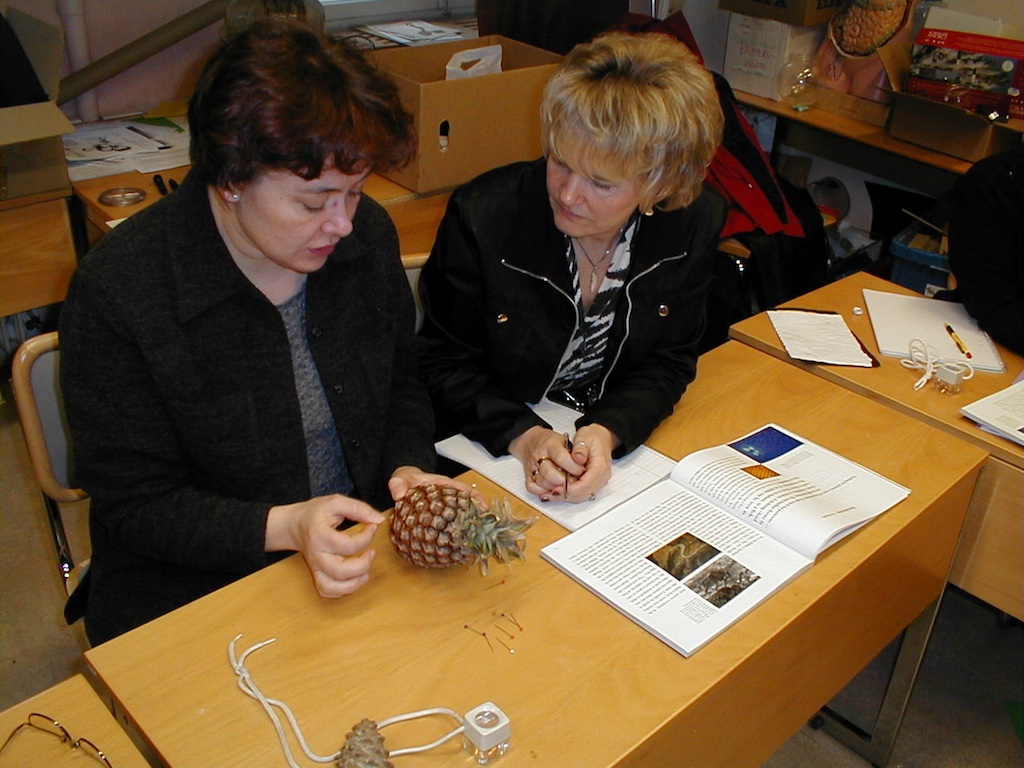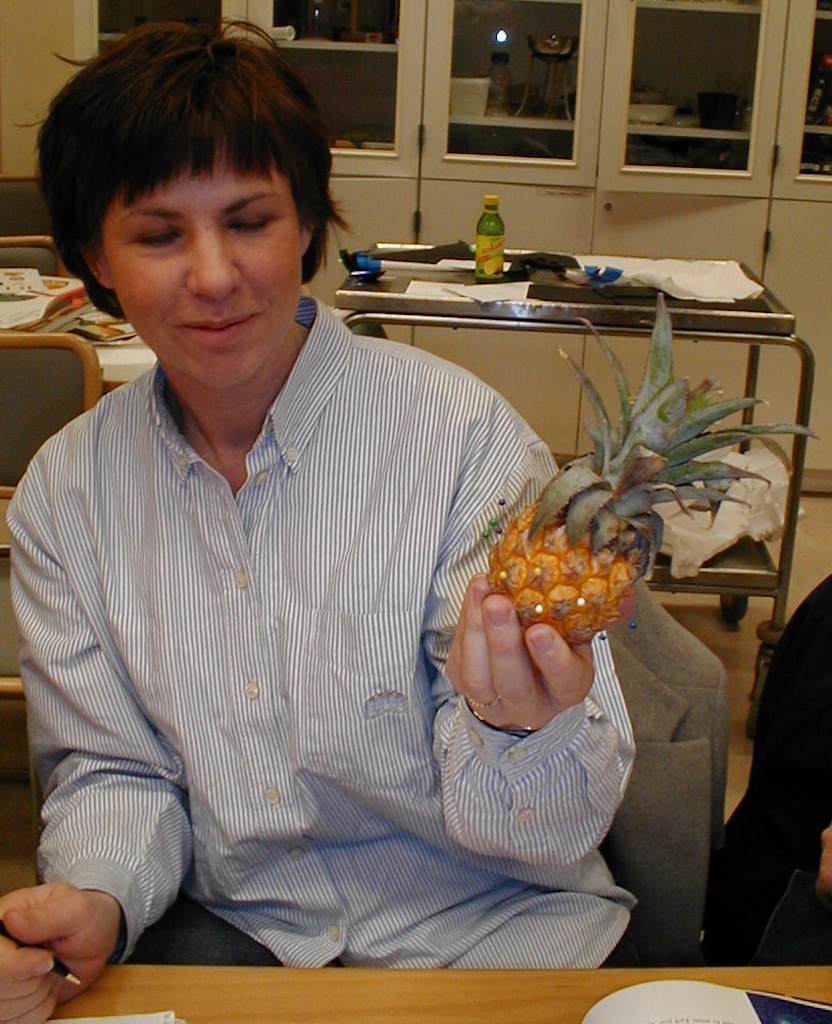Counting is difficult

Teachers push colored pins into a spiral to mark and count the spirals.
Counting is difficult

Teachers push colored pins into a spiral to mark and count the spirals.
Introduction
Count the spirals that circle around a pineapple. You will find fibonacci numbers.
Material
A pineapple
Pins with colored heads.
At least 3 different colors with 20 pins of each color.
optional colored yarn
To Do and Notice
Push a Pin into one scale of the pineapple.
Find an adjacent scale perhaps up and right of the first one, and push a pin of the same color into that scale.
Continue up and right and also down and left to make a spiral of pins circling the pineapple with the same color.
Choose a pin of a different color return to the first scale you places a pin into, place the new pin on an unmarked scale adjacent to the first one.
Continue up and right and down and left to trace out another spiral.
Repeat this procedure until all scales of the pineapple have been marked.
Make sure that adjacent spirals are marked with different colored pins.

Pienapple spirals marked with yellow, white and blue headed pins.
Count the number of spirals on your pineapple.
Almost all the time the number of spirals will be a fibonacci number.
Remove all your pins.
Start again.
Mark one scale.
This time mark spirals going up and left and down and right.
When you have marked all the scales count the number of spirals again.
The number of spirals will almost always be a fibonacci number.
What's Going On?
A growth point known as a primordia spirals around the growing tip of a pineapple or apine cone giving rise to scales or bracts at regular intervals. The result is a pattern of scales that forms a Fibonacci number of spirals.
The Fibonacci series of numbers is 1,1,2,3,5,8,13,21. Each number in the Fibonacci series is the sum of the previous 2 numbers.
If there is an error in the angle at which a primordia starts, it is corrected by the growth of neighboring primordia which push it into position.
Etc
The ratio of two sequential Fibonacci numbers approaches phi, the golden ratio, phi = (sqr(5)-1)/2 or 0.618...
|
Scientific Explorations with Paul Doherty |
|
16 November 2011 |